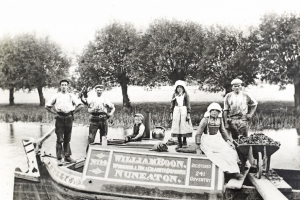William Hazledine: A Pioneering Shropshire Ironmaster
The story of William Hazledine is virtually unknown today, even in his home town of Shrewsbury. He was, however, a figure of considerable importance in the history of engineering and technology, supplying the ironwork for no fewer than five world ‘firsts’. These are Ditherington Flax Mill, Shrewsbury; the Chirk and Pontcysyllte Aqueducts on the Ellesmere Canal; lock gates for the Caledonian Canal; a new genre of cast-iron arch bridges; and Menai and Conwy suspension bridges.
Becoming an Ironmaster
William Hazledine lived most of his early life at Moreton Forge, a small ironworks about 7 miles northeast of Shrewsbury. His grandfather, father and uncle were millwrights (building and repairing mills), while other relatives ran the forge itself. William was apprenticed as a millwright to his uncle, which meant he had a solid grounding in technical drawing, carpentry, building work, surveying, and controlling the flow of water. From his upbringing he also learned the techniques of producing artefacts in iron and brass. In 1785 he set up his own business in Shrewsbury as a millwright and manufacturer of millstones, and shortly after he went into partnership in a small iron foundry in the town.2 In late 1786 the civil engineer Thomas Telford (1757-1834) arrived in Shrewsbury to rebuild the castle, and Telford and Hazledine soon became friends. Another important new arrival to Shrewsbury was the mason and master builder John Simpson (1755-1815), who moved in 1790 to oversee the building of the new St Chad’s Church. The three men, Hazledine, Telford and Simpson, became lifelong friends as well as business associates, creating mutual confidence that would be important in many of Telford’s major works.
Keywords: Shropshire, Hazeldine, Iron, Ditherington, Telford, Canals, Rivers, Waterways, Transport
Download the Full Article (PDF)Categories:
Ironbridge Industry Lunar Society Canals Shropshire Places to Visit Birmingham
Related Content

Canalboat People: Lives on the Waterways of Birmingham
In Birmingham, Warwickshire, Canals, Women,

Was There a Shropshire Enlightenment?
In Enlightenment, Shropshire,





